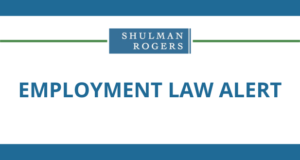| The EEOC recently issued its enforcement guidance on workplace harassment. While the guidance is not legally binding, it provides the EEOC’s legal analysis of standards for harassment and employer liability applicable to claims of harassment.
Harasment is only covered by federal EEO laws if it is based on one or more of the individual’s characteristics that are protected by these laws. The guidance discusses each of the protected characteristics and provides examples of harassment based on each, including:
- Racial harassment includes harassment based on traits or characteristics linked to an individual’s race, such as the individual’s name, cultural dress, accent, and physical characteristics, including appearance standards (e.g., hair textures and hairstyles commonly associated with specific racial groups).
- Harassment based on color includes harassment due to an individual’s pigmentation, complexion, or skin shade or tone.
- National origin harassment includes harassment regarding traits or characteristics linked to an individual’s national origin, such as physical characteristics, ancestry, or ethnic or cultural characteristics (e.g., attire or diet), and linguistic characteristics (e.g., non-English language accent or a lack of fluency in English).
- Religious harassment includes harassment based on religious stereotypes and harassment because of a request for a religious accommodation or receipt of a religious accommodation. It also encompasses explicitly or implicitly coercing employees to engage in religious practices at work.
- Sexual harassment encompasses pregnancy, childbirth, and related medical conditions (including lactation, using or not using contraception, and deciding to have or not have an abortion), and sexual orientation and gender identity. Sexual harassment includes misgendering or denial of access to a bathroom or other sex-segregated facility consistent with the individual’s gender identity.
- Age harassment includes harassment based on stereotypes about older workers, even if they are not motivated by animus, such as pressuring an older employee to transfer to a job that is less technology-focused because of the perception that older workers are not well-suited to such work or encouraging an older employee to retire.
- Disability harassment includes harassment based on traits or characteristics linked to an individual’s disability, such as how an individual speaks, looks, or moves.
- Harassment based on genetic information includes harassment based on an individual’s, or an individual’s family member’s, genetic test or on the basis of an individual’s family medical history.
- Harassment based on the perception that an individual has a particular protected characteristic is illegal even if the perception is incorrect.
- Harassment based on association includes harassment because an individual associates with someone in a different protected class or harassment because an individual associates with someone in the same protected class.
- Intersectional harassment includes harassment based on more than one protected characteristic of an individual (e.g., race and gender).
- Facially discriminatory conduct that explicitly insults or threatens an individual based on a protected characteristic (e.g., racial epithets or graffiti) does not need to be directed at a particular individual to be harassing. In addition, the motive of the individual engaging in such conduct is not relevant to whether the conduct of facially discriminatory.
- Conduct that is not facially discriminatory (e.g., use of the terms “boy” or “you people”) may be illegal depending on factors such as context, inflection, tone of voice, local custom, and historical usage.
The guidance also discusses the liability standards that apply in harassment cases, including:
- If the harasser is a “proxy” or “alter ego” of the employer, the employer is automatically liable for the hostile work environment created by the harasser’s conduct. An individual is considered an alter ego or proxy of the employer if the individual possesses such high rank or authority that their actions can be said to speak for the employer.
- If the harasser is a supervisor and the hostile work environment includes a tangible employment action against the victim, the employer is vicariously liable for the harasser’s conduct and there is no defense to liability. An individual may be considered a supervisor if the harassed employee reasonably believes them to have such power.
- If the harasser is a supervisor (but not a proxy or alter ego) and the hostile work environment does not include a tangible employment action, the employer is vicariously liable for the actions of the harasser, but the employer may limit its liability or damages if it can prove that it took reasonable steps to prevent and correct harassment, and the employee unreasonably failed to take advantage of those opportunities or take other steps to avoid the harassment.
- If the harasser is any person other than a proxy, alter ego, or supervisor, the employer is only liable for the hostile work environment created by the harasser’s conduct if the employer was negligent in that it failed to act reasonably to prevent the harassment or to take reasonable corrective action in response to the harassment when the employer was aware, or should have been aware, of it.
On May 13, 2024, attorneys general from 18 states filed a lawsuit in the U.S. District Court for the Eastern District of Tennessee against the EEOC, seeking to block the enforcement of the guidance on the basis that it illegally expands Title VII’s protections against sex-based discrimination by creating new gender-identity rules. The lawsuit argues that while Title VII prohibits an employer from terminating an employee for being homosexual or transgender, it does not require employers to accommodate their employees’ gender identities (such as by requiring employees to use another employee’s preferred pronouns; allowing transgender employees to use the restroom that corresponds with their gender identity; refraining from requiring employees to adhere to the dress code that corresponds to their biological sex).
We will continue to monitor these developments and provide updates. If you have any questions about this Alert, please contact the Shulman Rogers attorney with whom you regularly work or a member of the Shulman Rogers Employment and Labor Law Group. |
